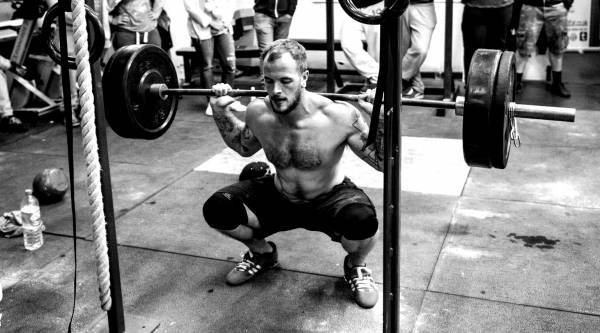Adductor Magnus
It's not often that I learn about a muscle from Instagram, but that's exactly what happened after I looked at this post by the very fit steficohen (look closely at a great exercise for this muscle as well, but it spoils the surprise for now).
The reason this is surprising to me is that adductors adduct! They pull the limbs closer to the midline. This is not what is occurring to the thighs when you squat. Hips and knees extend during the upward motion of the squat. Knees are not supposed to be knocking together with hip adduction.
But...apparently, I have much to learn about the adductor group of muscles on the medial thigh that include the adductor brevis, adductor longus, and the mighty adductor magnus.
Anatomy
As you can see the adductor magnus originates on the pelvis, the lower ring of the ischium to be exact, but it has a really cool feature in that it twists as it goes down to its insertion onto the medial and distal femur (picture to the left includes the adductor longus on top with the magnus twisting its way down the inner thigh only seen on that top down view to the right).
Why have this design? It's almost like it is working against itself pulling the femur in and up, but this actually pulls the ball of the femur into the socket of the pelvis and stabilizes the joint while other muscles pull from the front or the back to cause movement. It will also extend the hip depending on what position the hip is in. With the hip in a fully flexed position (like at the bottom of a squat) the fibers of the adductor magnus will be lengthened, meaning that if they contract and shorten there will be some hip extension.
Of course, the primary movement of the adductor group is to adduct the thigh when it is freely moving, but many times the feet are firmly planted on the floor (like in a squat) so adduction is virtually impossible yet the hip is moving through flexion and extension with powerful glutes and quads pulling on the femur. In order to be a smooth movement the hip joint needs to be stabilized from side to side movements. You can imagine a wobbly kneed weight lifter is not going to squat very much.
Finally, there is a peculiar portion of the adductor magnus that inserts down on the medial condyle of the femur, called the ischiocondylar portion. See that tiny string of muscle that attaches further down the bone than the majority of fibers terminating on the shaft of the femur? These fibers are oriented vertically and can be followed all the way back to the ischium (sit portion of the pelvis) making this part of the muscle the "4th hamstring" because when these fibers shorten they will extend the hip back. While the majority of the fibers run at an angle to adduct, these are oriented only to extend the hip. Yet again, this shows us one muscle with many purposes. It's not just a matter of turning "on" or "off" a muscle that makes a joint move but individual fibers in particular portions of muscles can cause vastly different movements.
Function
Well, the function of the muscle has been discussed in it's anatomy (per usual), and this does finally explain why my groin is often sore after I squat. Let me tell you though, that is NOT going to get me on that weird hip adduction machine at the gym.
Instead, I will do that only slightly less awkward exercise discussed at the top of the page or check out some of these posts on strengthening your adductor magnus to improve your squat.
Squat University asks THE GREAT SQUAT DEBATE: TOES FORWARD OR ANGLED OUT? and shows that toes out activates the adductor magnus more.
John Clark reports 3 Reasons You Don’t Squat More (And What To Do About It) including how to test and strengthen the adductor magnus.
and as seen above the incomparable Stephi Cohen shows the importance of strong hip adductors and how to train them.
BUT WAIT...THERE'S MORE
Want to stretch your aductor magnus??? Of course, you do! Stretching is part of strengthening. And, of course, you want some videos to tell you more.




